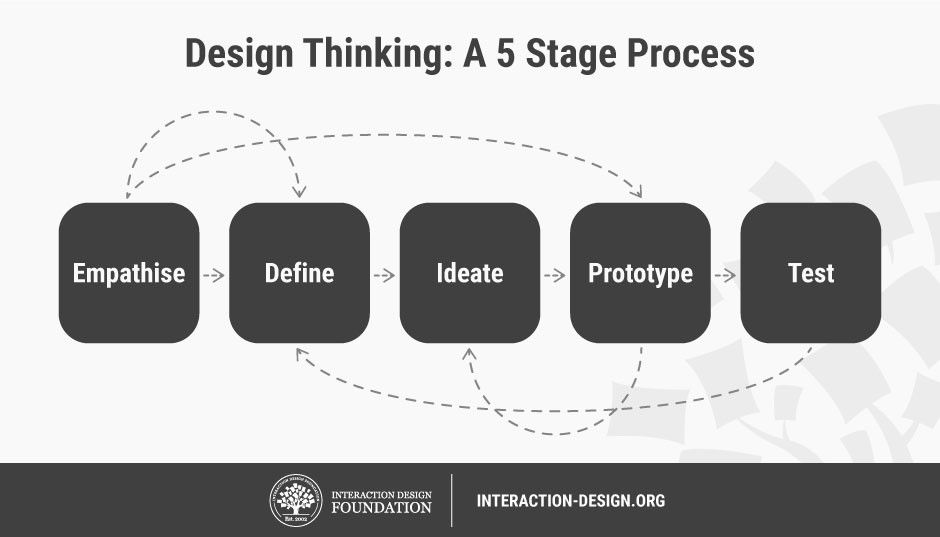#FutureFit Mindsets, High Performance Teams,
Limitless Leadership and CLEARx Cultures with Appreciative Inquiry Design Thinking
Contact Tony Here
The Revolutionary Workplace…Appreciative Design Thinking
Design thinking and appreciative inquiry is a process to create a context and process to get creative and innovative ideas from anywhere and anyone in the team or organisation.
For being #futureFit and thriving in a VUCA world – innovation, application and execution must be a fundamental part of daily thinking and focus.
Innovation, by any name, is a must for any business to thrive in these tough times.

The framework describes a human-centered, iterative design process consisting of 5 steps—Empathize, Define, Ideate, Prototype and Test.
It’s flexible and focused on collaboration between designers and users.The emphasis on creating ideas based on how real users think, feel and behave.
Design Thinking tackles complex problems by: Empathising: Understanding the human needs involved. It primarily Human Centric in Focus. It’s a cognitive, strategic, and practical hands on processes to innovate, create, and design new concepts .
Design Thinking tackles complex challenges, problems and opportunities by:
- Empathising: Understanding the human needs involved.
- Defining: Re-framing and defining the problem in human-centric ways.
- Ideating: Creating many ideas in ideation sessions.
- Prototyping: Adopting a hands-on approach in prototyping.
- Testing: Developing a prototype/solution to the problem.
Step 1: Create a safe, positive, inclusive, context and culture, to invite and enable everyone to participate in scanning, suggestions, development, and implementation.
Design thinking and appreciative inquiry is a process to create a context and process to get creative and innovative ideas from anywhere and anyone in the team or organisation.
For being #FutureFit and thriving in a VUCA world – innovation, application, and execution must be a fundamental part of daily thinking and focus.
Innovation, by any name, is a must for any business to thrive in these tough times.
Step 2 : Generate ideas: Quantity, not quality matters here. The more, the merrier.
It’s not about coming up with the perfect solution. Use this step to explore multiple-aspects and approaches to the problems, and possible solutions.
The more perspectives you can explore, the better insights and options you can create. Because new ideas tend to arise when you combine information, ideas and perspectives, that haven’t been combined before.
Prototype and Experiment:
Once you have your long list of ideas, you need a systematic way to narrow down your list.
The challenge is that it’s very hard to tell a good idea from a great one.
Prototyping, or building an early-stage version of your idea and testing it out on a small group, can be a great way to see what actually works.
Learn from failures and iterate. Emotional support and constructive feedback are important at this stage to keep the process moving forward and to improve upon the original idea
Champion:
Even if you have great ideas, you need support and resources to scale them.
Creators, Designers and Innovators must be able to present solutions and persuade decision makers, that they have the ability to successfully implement an idea.
Ps – It does help to have historical data from earlier refinements and experiments to back up claims and promises.
Implement:
Here the plan is to transform the idea into something tangible and useful… like a finished product or a service.
Note: Success isn’t measured by production alone. Any successful innovation needs to have positive and profitable impact. It also needs to be simple enough to be adopted within the organization.
Design thinking helps individuals build the skills and mindsets, they need to effectively generate multiple ideas, and then select, refine and test them out — the first two stages of the innovation process.
By encouraging your teams to learn about design thinking, you’ll reinforce innovative values in your culture. you give your people a common language to talk about innovation. And you begin to make innovation something that’s accessible to everyone.
To transform your organisation’s performance and into a Consciously Constructive REVOLUTIONARY WORKPLACE with strategic capacity to execute, innovate and deliver exponential impacts and results – Call Tony Dovale – 083-447-6300
Source: researchers Jill E. Perry-Smith and Pier Vittorio Mannucci
v2021.11.28a
